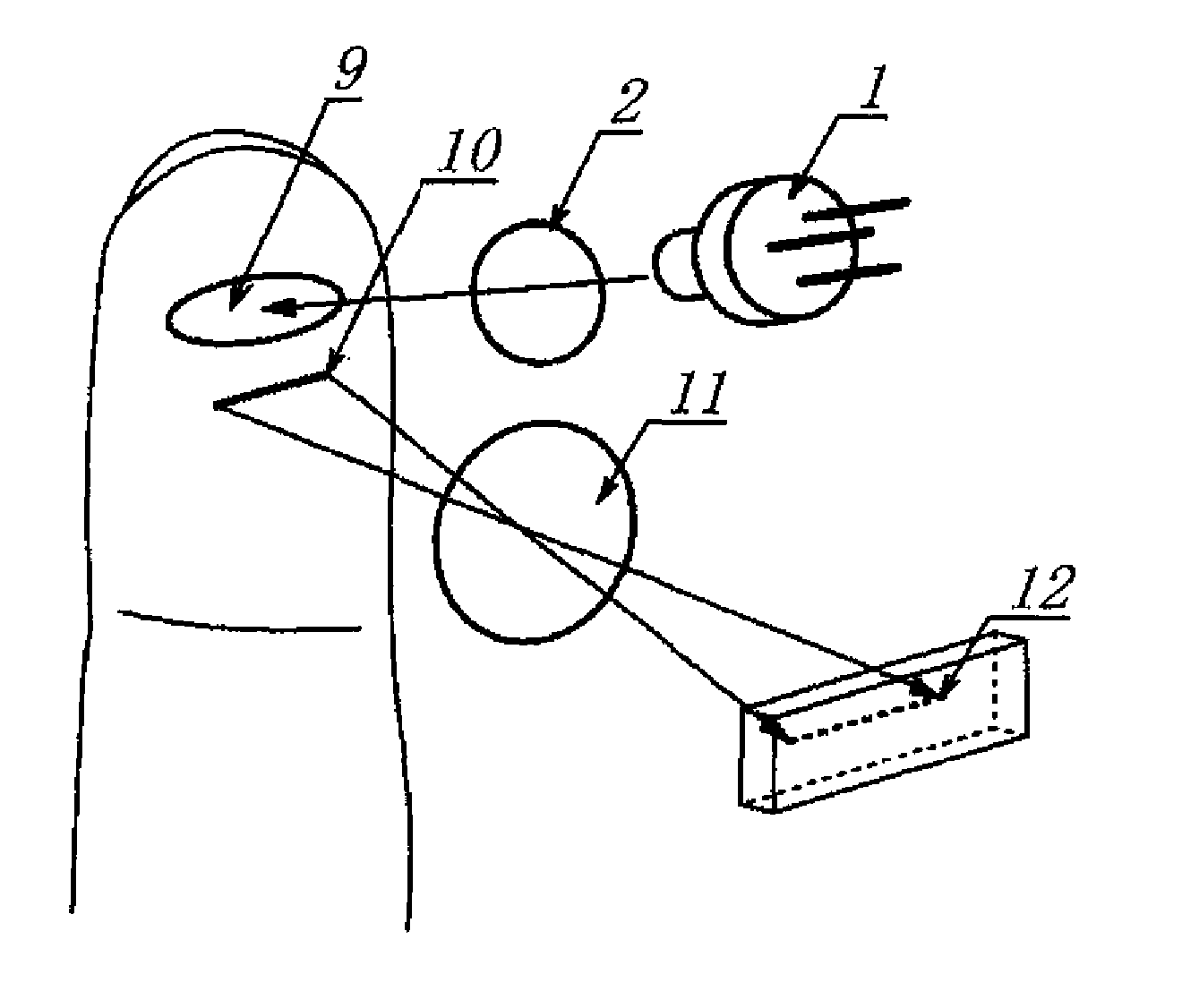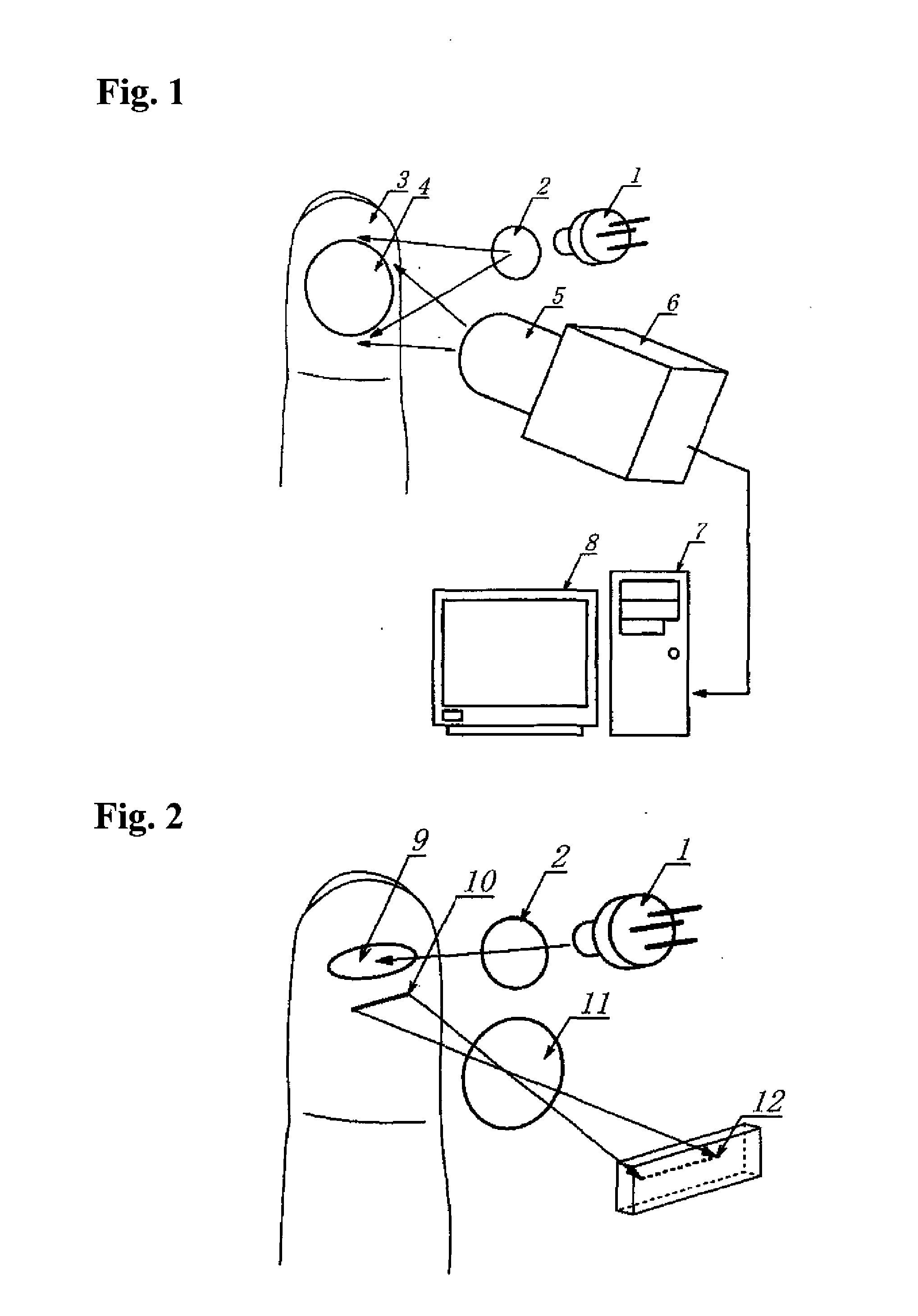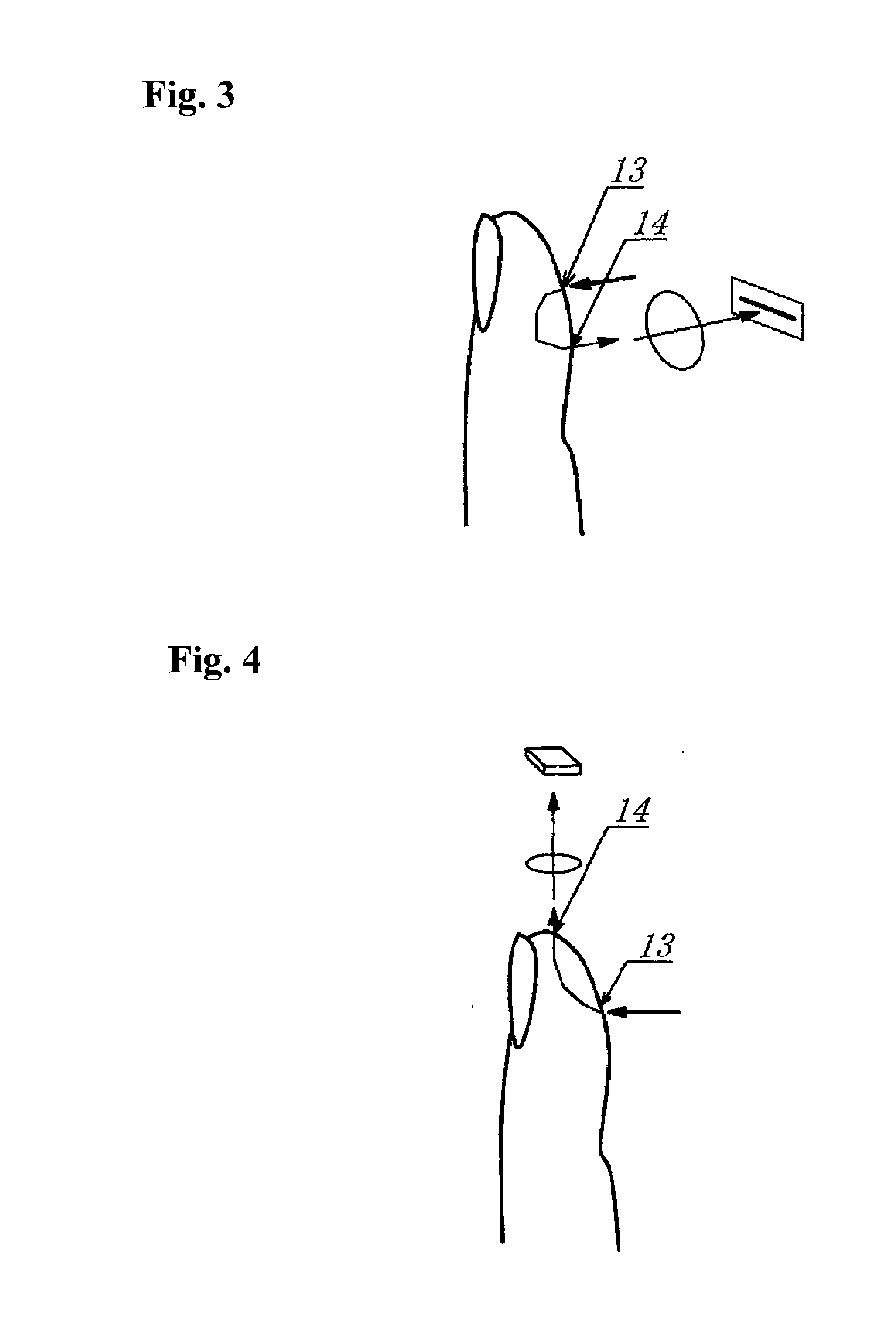Personal authentication method using subcutaneous bloodstream measurement and personal authentication device
- Summary
- Abstract
- Description
- Claims
- Application Information
AI Technical Summary
Benefits of technology
Problems solved by technology
Method used
Image
Examples
Embodiment Construction
[0088]Information achieved from the bloodstream, out of information concerning a living body, has a feature that makes it impossible to identify a person unless a sensor works on the person while the person is alive. A personal authentication method utilizing, e.g., a fingerprint based on laser speckles of a finger pad is a technique of measuring the subcutaneous bloodstream which is modulated spatially by the ridge-and-recess pattern of a fingerprint by a bloodstream measurement technique using laser scattering. In order to measure the subcutaneous bloodstream, a laser beam is first expanded and irradiated to a finger pad, and light reflected from a blood vessel layer under the skin is focused as laser speckles onto an image sensor plane using an optical system. The laser speckles are continuously scanned by using the image sensor, an amount representing a rate of time variation of light intensity received at each pixel, for example, an average time variation rate, or a reciprocal ...
PUM
 Login to View More
Login to View More Abstract
Description
Claims
Application Information
 Login to View More
Login to View More - R&D
- Intellectual Property
- Life Sciences
- Materials
- Tech Scout
- Unparalleled Data Quality
- Higher Quality Content
- 60% Fewer Hallucinations
Browse by: Latest US Patents, China's latest patents, Technical Efficacy Thesaurus, Application Domain, Technology Topic, Popular Technical Reports.
© 2025 PatSnap. All rights reserved.Legal|Privacy policy|Modern Slavery Act Transparency Statement|Sitemap|About US| Contact US: help@patsnap.com



